Victorian houses in Scott Street from Alta Plaza
Lafayette Park is covered on the first two pictures on this page so now it is the turn of Alta Plaza. While the views of the Pacific Heights houses from Alta Plaza are generally not as good, but there is a clear view from the park to the south right down the peninsula.
Victorian houses in Gough Street from Lafayette Park
The best houses are found around and in the area between two parks, Lafayette Park and Alta Plaza. Both parks provide an elevated viewpoint over the surrounding Victorian houses. In the centre of this picture, No 2004 Gough Street built in 1889 is an excellent example of the Pacific Heights style.
Spreckels Mansion from Lafayette Park
One house that didn’t have to survive the earthquake is the Spreckels Mansion, built in 1913 for sugar magnate Adolph Spreckels and his wife Alma. Adolph died in 1924 leaving Alma de Bretteville Spreckels a very rich widow. She devoted herself to charitable work, including supporting the arts. Alma continued to live in the mansion at 2080 Washington Street until her death in 1968. It is now owned by best selling author Danielle Steel and is not open to the public.
Victorian houses in Washington Street
The sheer variety of houses in Pacific Heights is breathtaking. It is easy to image that you are on a movie set, but these houses are not just facades, they are very real.
Pacific Heights
Click on Minimap to navigate
Home > US States > The West > California > San Francisco >
Victorian buildings in Jackson Street at Laguna Street
Although most buildings in Pacific Heights are low rise Victorian mansions, there are a few taller buildings to be found, particularly along Jackson Street near the junction with Laguna Street.
Haas-Lilienthal House, Franklin Street
One house that is open to the public on certain days of the week is the Haas-Lilienthal House. It was built in 1886 as the home of Bavarian immigrant William Haas. His daughter Alice, who married Samuel Lilienthal, lived in the house until 1972 and she kept most of the original artefacts and furnishings. In 1972 the building was donated to the San Francisco Architectural Heritage Foundation who have converted it into a museum as an example of how a typical Pacific Heights house would have looked back in the Victorian era.

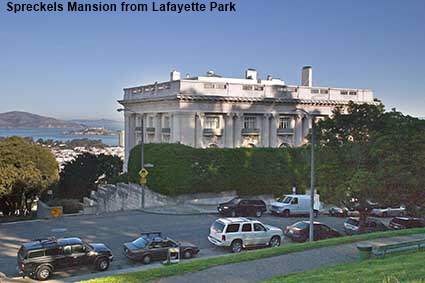
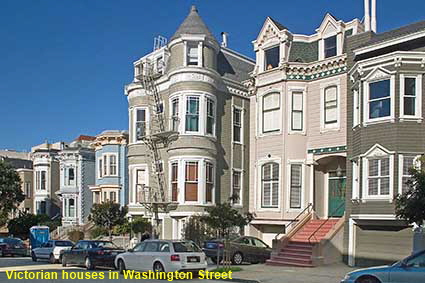
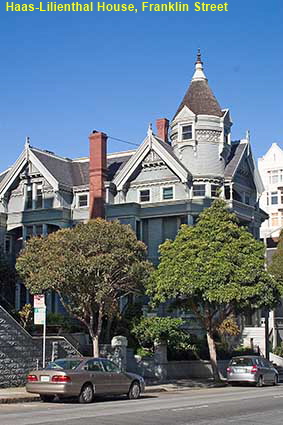
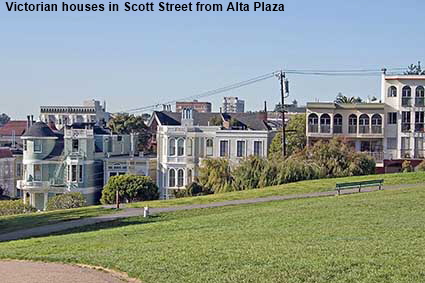

The centre of the peninsula is very hilly with the the land rising rapidly as you travel inland from the shoreline at the Marina. Pacific Heights is the product of the Victorian cable car system which in the 1870s made the area accessible. Until then Nob Hill (now in the Chinatown area) was the traditional home for the rich of San Francisco but it was getting a little crowded so the ‘nouveau riche’ of the era built new and extravagant houses atop Pacific Heights. They were strong houses built on solid foundations and so largely escaped damage in the 1906 earthquake. The fiery aftermath of the earthquake was kept away by sacrificing some mansions on Van Ness Avenue. As a result, modern day Pacific Heights is remarkably unchanged from its Victorian heyday.


To move forwards or backwards through the San Francisco trail click the arrows above, or select your next destination on the Minimap.
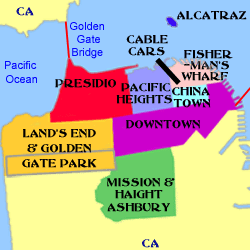
DLU070607

© Mike Elsden 1981 - 2025
The contents of this page may not be reproduced in full or in part without permission